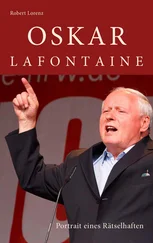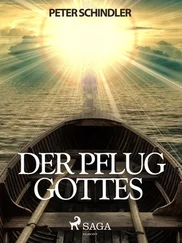Oskar and Emilie would hardly recognize Ostrava today. It is a major industrial center and the Czech Republic’s third largest city after Prague and Brno. By Czech standards, Ostrava is a relatively modern town that sprung up after the Austrian emperor, Joseph II, united what remained of Silesia with Moravia after Frederick the Great of Prussia conquered most of it four decades earlier. In the nineteenth century, Austrian Mährisch Ostrau became an important Austrian industrial center because of its coal mines and iron furnaces. Though there was a strong German presence in Ostrava, it was predominantly a Czech town. By the 1930s, less than 20 percent of Ostrava’s population was German. 20Modern Ostrava does not look or feel like a gloomy industrial town and it retains much of its prewar charm. Trolleys still meander along tracks in the middle of the streets and the pace is slow and relaxed. In many ways, modern Ostrava is still the traditional entranceway to the beautiful rolling hills and rich farmland of Moravia.
It is about three hours by car from Kraków to Ostrava on surprisingly modern roads. The several important roads and railways that converge through the city make it an important terminus for train, truck, and car traffic. Oskar said little about his assignment in Mährisch Ostrau after the war. He told Fritz Lang that he took the assignment to protect himself from charges that he continued to maintain relations with Jewish friends and acquaintances after the Germans moved into the Sudetenland. Though there is no evidence to discount Oskar’s claim, he probably took the Abwehr assignment in Moravská Ostrava because it meant a promotion and better pay. After the war, he told Fritz Lang that he joined Abwehr because it was “the most realistic option amidst the bustle of the grouping formations” and because of the influence of his father, who was loyal to the “traditions of the KK [ kaiserliche und königliche, imperial and royal] army.” 21
Whatever his motivation, Oskar Schindler was actively engaged in espionage for Abwehr well before the German takeover of the remnant of Czechoslovakia in March 1939. Alois Polanski says that he drove his boss, Leutnant Görgey, an Abwehr officer, three times to meet with Schindler in Moravská Ostrava before the German move into Czechoslovakia. Their last meeting was probably on March 12, 1939, three days before Hitler absorbed Bohemia and Moravia. Though Moravská Ostrava was still part of Czechoslovakia, Abwehr used it as a prime listening post for developments within the country. As Hitler planned his second move against Czecho-Slovakia, though, Canaris was determined not to be excluded from planning for Hitler’s next moves. Abwehr looked constantly for collaborators within Czechoslovakia and carefully watched the activities of Czechoslovak intelligent agents. To strengthen his intelligence-gathering operations in Czechoslovakia, Canaris even approached General František Moravec, head of Czech military intelligence, about collaboration between the two agencies. General Moravec never responded to Canaris’s offer. 22
The move to Moravská Ostrava upset Emilie because she had to leave their large, comfortable home in Zwittau. The serenity of Zwittau was replaced by the hustle and bustle of their new apartment on 25 Sadova, in the center of Moravská Ostrava. Emilie said that the apartment was just across the street from a Wehrmacht base, though this would not have been possible until the spring of 1939. According to Emilie, the Schindler home became an Abwehr office with four workers, including Irena Dvorzakowa, Oskar’s newest lover. Dr. MeOislav Borak, a Czech expert on Schindler’s activities in Ostrava, doubts that Oskar had a full-fledged office in his home. This was the same conclusion reached by Gestapo investigators in 1940. Certainly Oskar kept some Abwehr materials in the apartment, but he later told Gestapo officials who were investigating the Polish break-in that he had never kept important Abwehr materials at 25–27 Parkstraße. 23
Emilie served as Oskar’s office manager and handled his routine Abwehr office work in addition to her housekeeping chores. Emilie had some sort of security clearance to do this work because she was also responsible for receiving, processing, and hiding the numerous secret files they received. Her only protection was a German Luger that they hid in a closet. The work she did for Oskar was the extent of her operational duties. 24
Although their work was deadly serious, there were a few moments of comic relief. Soon after they moved to Moravská Ostrava, Oskar bought forty carrier pigeons so that he could send messages to other Abwehr operatives. In addition to her office duties, Emilie had to feed the pigeons and clean their cages. According to Emilie, Oskar soon lost interest in the pigeons and never used them to carry messages. After a few months of pigeon duty, Emilie decided to set them free without telling Oskar. She chose a beautiful day, but, at first, they hesitated to leave their cages. Once free, they circled the Schindler home once, then flew away. Later, they returned to Ostrava to the frustration of Oskar’s superiors, who complained that the Schindlers had not taken good care of these valuable servants of the Third Reich. 25
Abwehr, Oskar Schindler, and German Plans for the Invasion of Poland
Though Hitler had allowed Admiral Canaris and Abwehr to play a secondary role in helping plan the takeover of rump Czechoslovakia, they were considered too vital to German military planning to be kept in the background for long. Moreover, Canaris was determined not to let Abwehr commit the same mistakes that had so hurt the organization in the fall of 1938. He approached planning for the attack against Poland with renewed vigor and ingenuity. Oskar Schindler would be important to Abwehr’s plans. 26
According to one Abwehr report, in the months before the invasion of Poland Oskar and his twenty-five agents were actively engaged smuggling arms and men into the Těšín area where they trained for secret combat operations. Schindler was involved in similar Abwehr activities in the Sillein (Žilinia) region. Two Abwehr agents with whom Oskar worked closely during this period were Herbert Hipfinger, who used the cover name Forster, and a second agent known only by a letter designation. 27
In the days after the German dismemberment of what remained of Czechoslovakia, European leaders searched for clues to Hitler’s next moves. Romania and Poland seemed to be next in line for a German takeover. Romania was dropped from the potential victim’s list when, on March 23, it signed an economic agreement with Germany giving Hitler control over most of its oil and farm products. Fearful of an imminent German move against Poland after Warsaw rejected Hitler’s demand for Danzig and transit rights across the Polish Corridor in return for Germany’s guarantees of Poland’s western borders, Prime Minister Neville Chamberlain told the British Parliament on March 31 that his government would come to the aid of Poland if its independence was threatened. Hitler, who wanted Poland in the German camp before the Reich dealt with Britain and France, decided that war was the only way to resolve the Polish question. On April 3, 1939, the Wehrmacht was ordered to begin initial planning for an invasion of Poland. 28
Moravská Ostrava had been an important Abwehr listening post into Poland before Hitler dismembered Czecho-Slovakia in the spring of 1939. Now known as Mährisch Ostrau in the new German Protectorate of Bohemia and Moravia (Böhren und Mähren), it became an important staging and information gathering point for Abwehr, the SS, the SD, and the Gestapo as they prepared for the invasion of Poland. Canaris was one of a handful of Wehrmacht officers who received a copy of the Hitler-OKW initial April 3 directive for Fall Weiss (Case White) for the future destruction of Poland. Updated on April 11 and then periodically during the spring and summer, it was predicated on the political isolation of Poland before German units destroyed Polish military forces in the field. It anticipated an action date on or after September 1, 1939. 29
Читать дальше












